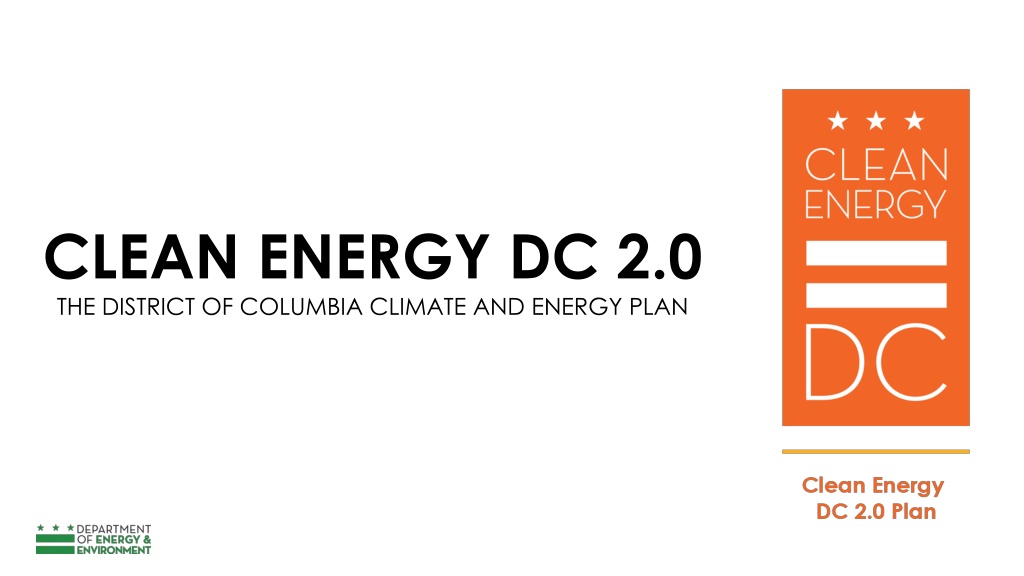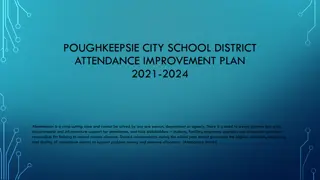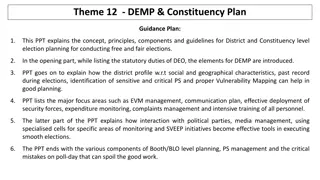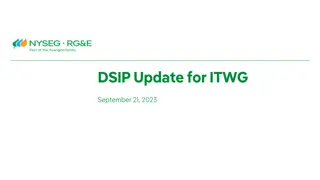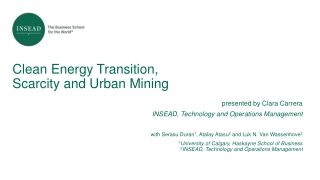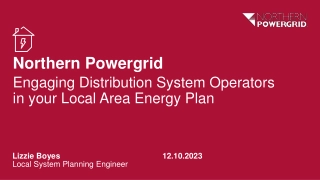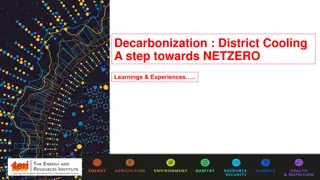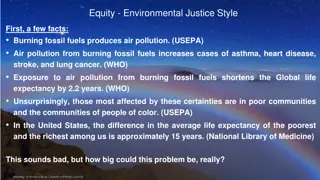Clean Energy DC 2.0: Transformative Climate and Energy Plan for the District of Columbia
Clean Energy DC 2.0 is a comprehensive plan aimed at achieving carbon neutrality by 2045 in the District of Columbia. It focuses on technical and data-driven solutions to decarbonize energy, buildings, and transportation sectors. The plan emphasizes community involvement and equity, highlighting benefits such as environmental justice, public health, economic prosperity, and resilience. Targets include transitioning to 100% clean power supply, reducing energy use, eliminating fossil fuel use, and achieving significant reductions in greenhouse gas emissions.
Download Presentation
Please find below an Image/Link to download the presentation.
The content on the website is provided AS IS for your information and personal use only. It may not be sold, licensed, or shared on other websites without obtaining consent from the author. Download presentation by click this link. If you encounter any issues during the download, it is possible that the publisher has removed the file from their server.
Presentation Transcript
CLEAN ENERGY DC 2.0 THE DISTRICT OF COLUMBIA CLIMATE AND ENERGY PLAN
Planning Principles Transformational Technical and data-driven CEDC 2.0 should seek big, transformative solutions to fundamentally redesign and decarbonize the energy, buildings, and transportation sectors, in order to meet the goal of becoming carbon neutral by 2045. CEDC 2.0 should be a highly technical plan that will use the best available data to guide the actions and recommendations. Participatory Actionable CEDC 2.0 should prioritize community and stakeholder involvement. The level of transformation required to tackle climate change will impact all of us, and therefore decisions should be made in collaboration with our communities, particularly low-income communities and communities of color that have borne disproportionate share of burdens from climate pollution, and whose needs must be centered. CEDC 2.0 should create real-world, tangible solutions that can be implemented by public and private sectors. Coordinated and integrated CEDC 2.0 should take a holistic approach, recognizing decisions made in one sector impact other sectors and the larger system; this plan will complement existing and ongoing initiatives.
Values and Co-Benefits Equity and environmental justice Potential to on low-income communities and communities of color. Public health Potential to enhance healthy living, physical comfort, and mental wellness. Economic prosperity Potential to stimulate local business, economic development, and job opportunities. Environmental stewardship Potential to positively impact natural systems, biodiversity, air quality, and water quality. Resilience and reliability Potential to increase local adaptive capacity to respond to climate change impacts, and secure reliable energy services.
and Targets @DOEE_DC @DOEE_DC
INTRODUCTION TO CLEAN ENERGY DC 2.0
Potential CEDC 2.0 Targets ELECTRIFY CLEAN SUPPLY REDUCE 24/7 100% clean power supply by 2045 Cut per capita energy use by 50% by 2032 Zero fossil fuel use by 2045 ACHIEVE CARBON NEUTRALITY 60% reduction in GHG emissions by 2030 100% reduction by 2045 7
Preliminary Carbon Free DC draft- does not reflect new 2045 carbon neutrality date
DC-DCCR Report CEDC2.0 Accelerate transition to Clean Energy Actions 1-3 will be incorporated into the draft, as well as embodied carbon (4.3) Anticipate Climate Risks CEDC2.0 will have a greater resiliency focus than current version Empower All Communities 8,10 will be reflected in the draft, and 11 is being considered
New or expanded topics being considered Embodied Carbon Resilient design Building electrification & transition to clean thermal energy Peak demand and demand management Transport/building electrification and the grid Economic development
Contact Jamie.Donovan@dc.gov
